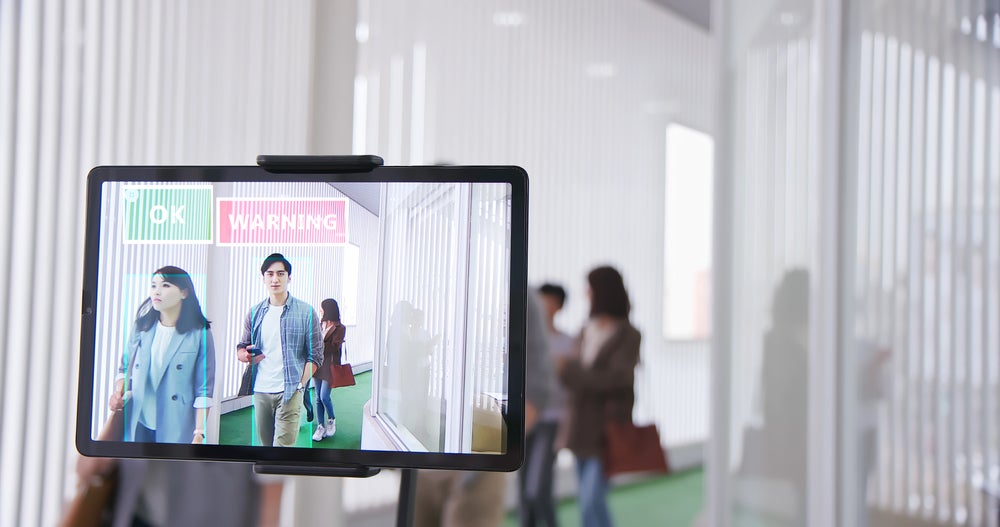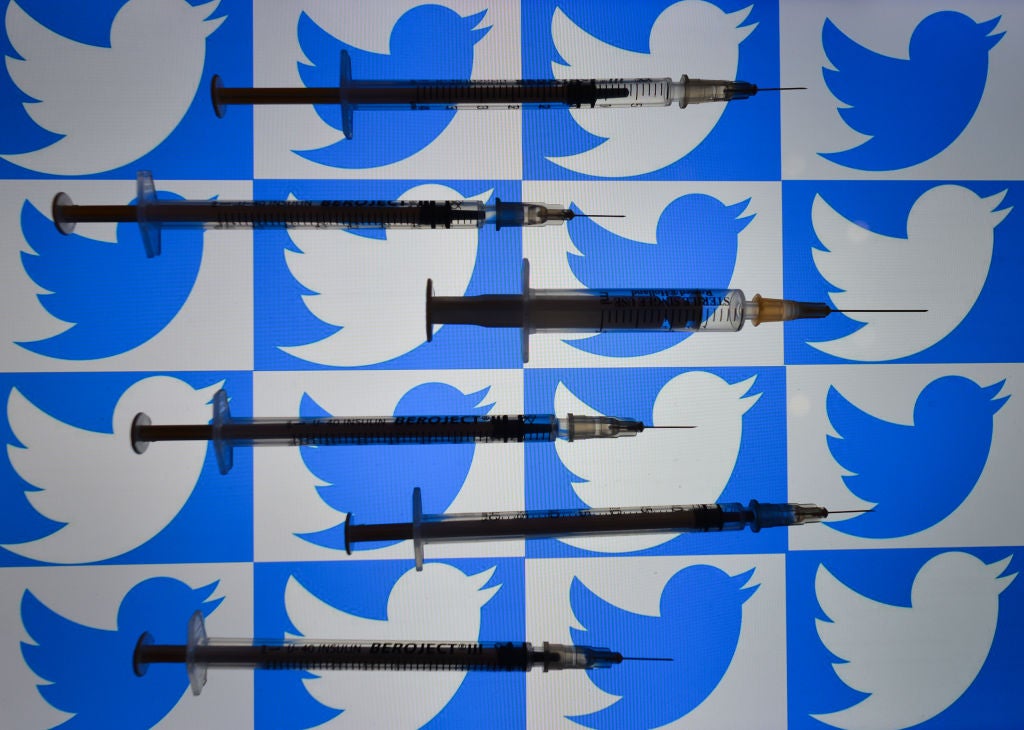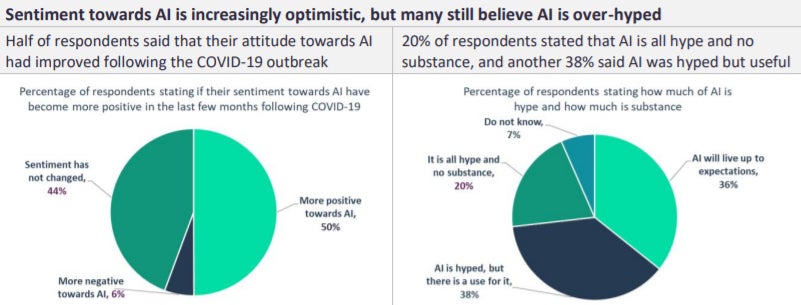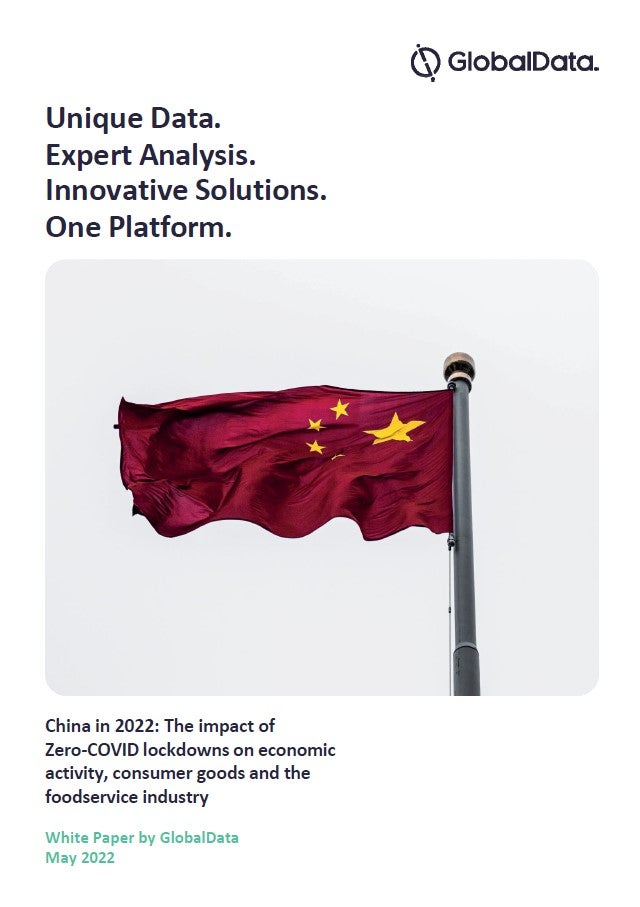
ľ��ֱ�� intelligence, or AI, has come into its own during the Covid-19 pandemic. But while the tech has strengthened the response to the crisis and enabled vaccine conspiracy theories to be throttled, it has also been seen as a Trojan horse by privacy advocates.
It has been a year and a half since Covid-19 broke out. In the intervening chaos, the role AI played in protecting lives may have been overlooked. Prior to the World Health Organization’s (WHO) first public statement that a pandemic was looming, a warning about a coronavirus outbreak had in fact already been made with the aid of AI.
How well do you really know your competitors?
Access the most comprehensive Company Profiles on the market, powered by GlobalData. Save hours of research. Gain competitive edge.

Thank you!
Your download email will arrive shortly
Not ready to buy yet? Download a free sample
We are confident about the unique quality of our Company Profiles. However, we want you to make the most beneficial decision for your business, so we offer a free sample that you can download by submitting the below form
By GlobalDataOn New Year’s Eve 2019, Canadian health monitoring platform warned its customers to avoid Wuhan, China and its burgeoning outbreak. The public would only get similar proclamations a week or more later from entities such as the WHO and the US Centers for Disease Control and Prevention. BlueDot has form in this area, having previously predicted the 2014 and 2016 breakouts of Ebola and Zika respectively. Its early notification system for infectious disease is made possible by an AI-driven algorithm that sifts through news reports, official proclamations, animal and plant disease networks, and even airline data that can help predict where and when infected persons are travelling next.
That AI made it possible for humans to spot the budding coronavirus crisis in its early stages is apt considering how much the pandemic has accelerated adoption of the technology since last year. According to , more than three-quarters of companies believe AI has played a role in helping them survive the Covid-19 pandemic.
GlobalData’s thematic goes as far to say the pandemic and AI “have something of a symbiotic relationship.” In the view of its analysts, this is down to how AI is helping with efforts to control the virus and related-misinformation, whilst also preserving public engagement in socially-distanced times.
With AI more than rising to the challenge of Covid, its spread throughout the business ecosphere will only be a matter of time – and industries are already striking gold because of it.
Healthy AI adoption in Covid-19
Sectors leading the charge in AI adoption are those with the most data to feed programs: think banking and payments. Big Tech is providing those programs, for as GlobalData analysts state, “there is no denying that companies with access to large repositories of data to power their AI models drive the development of AI [and] about a dozen tech giants from the US and China set the overall tone.”
Healthcare is a leading sector and top, data-heavy customer for Big Tech’s intelligent wares. GlobalData forecasts that the market for AI platforms for the entire healthcare industry will reach $4.3bn by 2024, up from $1.5bn in 2019. This is 8.2% of the total market total for AI platforms by the same year, forecasted at $52bn.
AI itself has played a role in everything from early detection and diagnosis of Covid-19 infection to development of drugs and vaccines and training of healthcare workers. Implementing AI tools has helped companies better understand how to combat the virus by mimicking human intelligence and analysing large volumes of data to quickly identify insights and patterns. In the same way that BlueDot’s programming found the virus, AI helped medical professionals find solutions to its impact on public health and healthcare systems.
Spanish healthcare provider Ribera Salud (RS) implemented one such predictive AI-based model to improve the health and quality of care for patients during the pandemic.
With its technological division FutuRS, RS uses the machine learning (ML) tools in cloud computing platform Azure to prevent any possible clinical worsening of a patient’s condition. By analysing and processing variables of interest in a patient’s clinical history, it is possible to predict certain adverse effects within day-to-day operations and care practices. In one example with this model, RS managed to reduce the number of patients who developed a pressure ulcer in ICU by up to 19%.
This kind of success helped RS nurses when seeing a patient and act accordingly with the right medication and care plan. In the demanding environment of a pandemic where healthcare professionals are more at risk of being overburdened, staff have greater control over patient risks by providing the right care at the right time for those under their care.
Trojan virus
AI has also helped deal with the virus outside of medical settings. for example has created a that tracks workers’ movements and gives them feedback in real-time if they break social distancing guidelines. The tech uses ML models to differentiate people from their surroundings and creates an accurate distance measurement between them with the use of depth sensors.
While laudable from an infection-prevention standpoint, this technology raises questions on how far we allow companies to monitor their employees. The coronavirus may be the Trojan horse that brings AI solutions into the workplace and keeps them there even when the pandemic has reached its end. What such technologies are used for from that point may be a matter of concern and businesses would do well to keep in mind public perception of AI’s more invasive attributes.
A good example of this on a state-level can be seen in China, where have been combined with facial recognition technology at airports and train stations. Thermal scanners are nothing new, but to allow AI to gauge the identities of those with elevated body temperatures in order to help them be better pinpointed by staff is a recent and perhaps worrisome development, particularly given Beijing’s penchant for mass surveillance. Assigning a name to every face seen on camera raises a whole host of privacy and human rights concerns, especially in states deemed to be authoritarian.
The EU has already to such concerns with draft legislation proposing that AI mass surveillance should be prohibited for most purposes, including commercial ones. The same draft would permit the use of facial recognition technology in mass surveillance for combatting serious crime and terrorism. A draft version of the proposals leaked in April also acknowledges that AI technology “can enable new manipulative, addictive, social control and indiscriminate surveillance practices that are particularly harmful” and that it could be detrimental to “human dignity, freedom, democracy, the rule of law and respect for human rights.”

Credit: Aslynun / Shutterstock.com
Intelligent information
To control their citizens, authoritarian states could feasibly use AI to filter out what it labels as misinformation from online platforms. This is already happening with regards to misinformation that unbiased fact checkers would comfortably label as fake news: conspiracy theories related to the pandemic, the sort which may be encouraged by hostile foreign powers.
Covid misinformation has spread through the digital ecosystem as fast as the virus itself. Theories abound alleging the Bill and Melinda Gates Foundation is behind the virus, and how it and a New World Order will profit from chip-carrying vaccines. If not carrying chips, then the vaccines are designed to either kill and sterilise individuals, according to varying theories.
Scientists from the US’ Los Alamos National Laboratory focused on four such theories spreading on Twitter. Using , more than 1.8 million anonymised tweets containing Covid-19 keywords were analysed then categorised as misinformation if of that bent, and matched to a particular theory. From this data, the researchers could see the inception of each theory and how it evolved over time. Monitoring fake news in this manner with the aid of ML, public health officials may be able to halt conspiracy theories in their tracks before the damage is done. This could be done by quicker deployment of public education initiatives to counteract false narratives, or marking out bot accounts as they begin their propaganda proliferation.
The value of AI in fighting misinformation on all fronts is driving investment in the field. Twitter bought Fabula AI for $22.8m in 2019, a London startup fighting fake news with ML tools. Another new London operation aiming to do the same, Logically, saw out 2020 with funding of £2.1m ($2.78m), raising its total funding to $9.5m according to GlobalData.
That being said, given Big Tech firms like , Twitter and Facebook have failed to throttle the flow of fake news on their platforms despite investing , it is probably too early to claim victory over the scourge of disinformation.
 Credit: NurPhoto via Getty Images
Credit: NurPhoto via Getty Images
Better bots and babble
Bots may be an ongoing bane for the public health sector during the pandemic, but they are also a potential boost when used on customer-facing platforms as opposed to the live feeds of social media.
Going back to healthcare, 2020 saw AI-powered chatbots like Babylon Health’s and France’s developed for contactless screening of Covid-19 symptoms and to help answer questions from the public on the disease. These not only resulted in reduced workload for hospital staff and better patient flow, but also lowered hospital visits and risk of coronavirus infection.
Keeping non-urgent cases away from hospitals during pandemic may be tricky, but keeping them from shops and highstreets is an easier ask when everything is closed. Not that it makes life any less difficult for businesses.
With face-to-face customer service interactions severely limited, queries from customers about topics such as store closures and cancellation policies have increased in lockdown. Chatbots and like Alexa provide a solution by enabling “businesses to communicate with high volumes of customers every day and provide a more personalised experience that drives growth, reduces costs, and improves retention and overall customer satisfaction,” according to GlobalData analysts.
Profiting highly from business’ chatbot adoption is Microsoft with its Azure Bot Service. Microsoft bundles its Azure figures in with its Intelligent Cloud (IC) business segment, the recent of which showed IC revenue grew 23% year-on-year (YoY) to $15.12bn. Azure is a key growth driver for IC, with its revenue alone growing by 50% YoY. Using this metric, Azure had the highest revenue growth out of all of Microsoft’s products, and it’s likely that yield will see higher investment in the platform’s AI and bot technologies.
Summing up: AI and Covid-19 in the 2020s
It’s clear to see why 2020 is being hailed by some as a breakout year for AI technologies. In a recent GlobalData survey of more than 1,700 senior executives worldwide, over half of respondents stated that they are already investing in AI, and 43% confirmed that they would be accelerating investment in AI over the next 12 months compared. Besides banking, healthcare and retail, sectors like automotive, defence, insurance and travel are considerably investing in the tech.
That said, many businesses are still wary of the AI hype, with 38% of those surveyed saying AI was useful if hyped, and 20% believing AI to be all hype and no substance whatsoever.

From GlobalData’s ľ��ֱ�� Intelligence Thematic Research (2020)
The bigger hurdle may be public perception, especially with fears over jobs being lost to automation coupled with more invasive surveillance from authorities and employers. GlobalData analyst Nicklas Nilsson adds: ”When an AI system does something wrong, like disproportionately flagging black users’ tweets as hate speech or credit card system giving higher credit limits to men than to women, it does create a lot of bad press.”
“Most people also have an unrealistic view of AI,” Nilsson continues. “When we hear “AI”, we tend to think of autonomous robots or super computers, which is why real-world applications often fall short, and why people might not realise they have interacted with AI in one form or another.
“Two common uses of AI are chatbots and personalised product recommendations, both receiving a boost last year, with demand for support services and ecommerce surging due to Covid. Two less common uses of AI include the use of computer vision technologies to enforce social distancing and the use of smart robots in care homes to boost mental health and reduce loneliness in lockdown.”
The symbiotic relationship between AI and Covid-19 has seen investment in the tech rise due to its assistance in the pandemic, easing the pressure on healthcare systems. The tech will no doubt be used to detect future outbreaks, and to assist in the fight against fake news in our current age of digital disinformation.
Like viral lies or a virus itself, AI is spanning and integrating across every sector but as a benign kind of disruptor, elevating instead of infecting all it touches – as long as it’s in the right hands for the right kinds of purposes.
By ľ��ֱ��’s Giacomo Lee. Find the GlobalData Thematic Research: ľ��ֱ�� Intelligence (AI)




